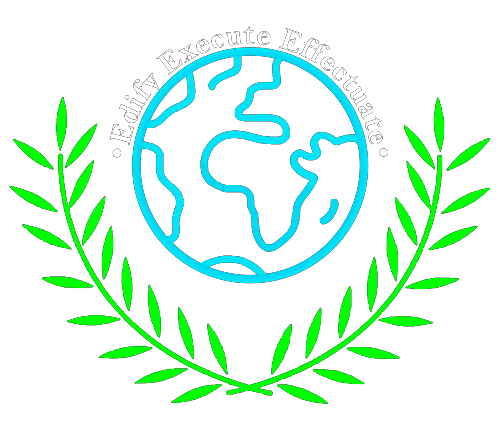Piyush Chaudhary
Abstract
This paper evaluates the critical challenges and gaps in child online safety policies in India by emphasizing the increasing risks children face in the digital age. Such as cyberbullying, cyber stalking , exploitation, and exposure to harmful content. Despite existing legal frameworks like the Information Technology Act (2000) and Protection of Children from Sexual Offences (POCSO) Act (2012), the rapid expansion of internet usage among children has increased by the COVID-19 pandemic. Which has highlighted the issue in enforcement, digital literacy, and resource allocation. This paper also examines the societal and structural barriers, including stigma, underreporting, and insufficient collaboration among stakeholders, which remains barriers to effective implementation. Drawing from international best practices and some Indian state-like Gujarat practices, the paper advocates for a holistic and adaptive policy framework that incorporates digital literacy programs, technological safeguards, enhanced parental involvement, and global cooperation to combat cross-border cybercrimes. It recognises the urgent need for targeted interventions and a collective approach to create a safer online environment to ensure children’s well-being and empower them to navigate the digital world responsibly.
Introduction
We live in a digital world being constantly in touch with our screens. From kids to the oldest , everyone uses various digital platforms like mobile phones, computers, laptops, Television etc. As various platforms have put “reasonable age verification” on their platforms so that only those who can understand digital platforms and are able to analyse various platforms safely could use it , especially for the children who don’t understand digital platforms. Despite that, in today’s digital age, children are increasingly using online platforms for education, entertainment, and social interaction! However, this digital integration also exposes them to significant risks, including online child sexual abuse and exploitation, which pose threats to their safety and well-being (Manoj et al., 2024). Although the World Health Organization (WHO), in collaboration with UNICEF(United Nations International Children’s Emergency Fund) and the Global Partnership to end violence against Children, introduced the INSPIRE (implementation and enforcement of laws; norms and values; safe environments; parent and caregiver support; income and economic strengthening; response and support services; and education and life skills) framework to prevent and respond to violence against children. Still challenges persist globally, especially in countries like India. Various Indian policies tried to work on this INSPIRE framework but challenges remains same,such as lack of international collaboration, inconsistent terminology, and the delicate balance between protecting children and respecting their privacy (UNICEF, 2016).Addressing these challenges requires innovative strategies such as targeted policies, technology-driven interventions, and a collective approach involving multiple stakeholders. Since India has a federal system of national and state policies, which provides a unique opportunity to put reforms at the state level and scale them nationally. For instance, the Gujarat government is recently planning to reform its child online safety policy which has potential for broad country level adoption. But before exploring specific policy recommendations, it is crucial to understand the problem, the scope of the problem and the reasons it demands urgent attention.
Why It’s Concerning
The internet use has increased among children after COVID 19, which has brought both opportunities (Online education, Easier communication etc ) and challenges( Data privacy, cyber security, child online exploitation etc). With nearly a third of India’s 692 million internet users being children (Kemp, 2023), the risks they face online have grown significantly. For example many children are exposed to mental health issues such as frustration, depression, and loneliness (Sharma, Sharma, Bakshi, & Duggal, 2022), while addiction to games like PUBG and Blue Whale has been linked to self-harm has also increased (Halder, 2018). Even the lack of media literacy among parents and children has left them vulnerable to cyberbullying, online harassment, and fraud (Singh,2023). Due to that, children are also influenced by inappropriate content, promotional videos, and unethical practices online (Waseem, S. & Koul, R. (2025), while shared device usage increases the chances of exposure to harmful material. Although measures like banning PUBG games in 2019 have been taken, underreporting of incidents, evolving exploitation tactics, and outdated legal frameworks continue to leave children at risk (NCRB, 2022).
Defining the children and child cyber abuse in Child Digital safety
Before we delve into the Child Digital Safety issue we have to understand who the children are? and what is cyber abuse ? so we can formulate a policy for the Safety from that abuse. Although The Protection of Children from Sexual Offences Act,2012 ‘3S Section 2(d), “child” refers to “anyone under the age of 18”. And NICHD Pediatric Terminology defined Age Stages into Preterm neonatal, Term neonatal,Infancy, Toddler,Early childhood,Middle childhood, Early adolescence and late adolescence(NICHD, Eunice Kennedy Shriver, 2011). But in the case of online safety there are three distinct child age brackets that experts use to categorise Internet users: first bracket includes those children younger than ten, Second bracket includes those children who are between the ages of ten and thirteen, and Last bracket includes those children between fourteen and seventeen(Waseem, S. & Koul, R. (2025).
While talking about Child abuse, World Health Organization described as it, “constitutes all forms of physical and/or emotional ill-treatment, sexual abuse, neglect or negligent treatment, or commercial or other exploitation, resulting in actual or potential harm to the child’s health, survival, development, or dignity in the context of a relationship of responsibility, trust, or power”. But the term “child cyber abuse” has no specific definition. Any abuse that takes place online qualifies into it ( Gohil & Thaker, 2024). But this abuse poses threats against the online safety of children and it’s not easily restricted due to lack of data and anonymity of offenders.
Existential Indian legal structure and policy for Child Digital Safety
India has made significant legal structure in addressing cyber crimes targeting children, such as child trafficking, cyberbullying, pornography, and identity theft(Waseem, S. & Koul, R. (2025). Even by adopting the UN Convention on the Rights of the Child in 1989, India amended Article 39(f) of its Constitution to mandate the State to ensure that children grow up in a healthy and dignified environment, protected from exploitation. This commitment is reflected in various laws and initiatives, including the Indian Penal Code (1860), Information Technology Act (2000), Protection of Children from Sexual Offences (POCSO) Act (2012), and the establishment of bodies like the National Commission for Protection of Child Rights (NCPCR). Even Special units, such as the Online Child Sexual Abuse and Exploitation (OCSAE) prevention unit, and programs like Cyber Crime Prevention against Women and Children (CCPWC), have further improved efforts to combat digital crimes against children.
India has created several Public policies based on the INSPIRE framework which offer a comprehensive approach to preventing violence and cyber risks against children. Each element of the framework addresses critical aspects of child protection. For instance, the National Cyber Security Policy (2013) ensures safe online environments, while the National Policy for Children (2013) and National Education Policy (2020) support caregivers and promote life-skills education. Additionally, the National Youth Policy (2014) emphasizes fostering positive norms and values to stop cyberbullying and other digital risks. Health-focused policies, such as the National Health Policy (2017) and National Mental Health Policy (2014), provide response and support services, contributing to the overall well-being of affected children.
Furthermore, India has introduced modern legislation to address emerging digital challenges. The Data Protection Bill (2021) focuses on safeguarding consent and privacy in the digital age, while the Digital India Bill (2023) emphasizes creating a secure and inclusive digital environment. Even BSNL ( Bharat Sanchar Nigam Limited) launched guidelines for parental control internet access . Together, these laws and policies form a robust framework that integrates legal, educational, and technological measures to protect children from cyber threats, ensuring their safety and empowering them to navigate the digital world responsibly.
Gaps in existing indian policy regarding Child Digital Safety
The major two gaps could be seen in Implementation of current existing legislation and lack of new policies. India has established numerous policies and laws to protect children from cybercrimes, but significant gaps remain in their implementation and effectiveness. A key challenge lies in the lack of education, training, and administrative support within institutions to enforce these policies effectively (Sharma, Sharma, Bakshi, & Duggal, 2022). Unlike the comprehensive frameworks seen in European nations, India’s regulatory system often lacks integration across different laws, leading to enforcement challenges and poor coordination among agencies.Furthermore, technological adaptation and resource allocation remain significant hurdles, as law enforcement agencies struggle with outdated tools and inadequate training to address emerging cyber threats (Manoj et al., 2024).
UNICEF has criticized India’s child protection policies on five major fronts: firstly on thes absence of uniform terminology, secondly on the gaps in the legal framework, thirdly on subjective interpretations of laws, fourthly on the challenges in balancing child protection and privacy, and lastly on the insufficient provisions for children accused of cyber offenses(UNICEF,2016) In practice it could be seen as POCSO Act addresses child pornography but it uses outdated terminology instead of globally accepted terms like Child Sexual Abuse Material (CSAM). Additionally, laws made by the Indian government fail to address issues like face-morphing software or AI-generated explicit images. In contrast, countries like New Zealand, Canada, and the European Union have updated their laws to include realistic depictions of fictional children as part of child pornography legislation (EU Council Framework Decision, 2009; Films, Videos, and Publications Classification Act, 1993; Title 18 of the United States Code § 1466A, 2003).
Even India also faces gaps in legislation addressing cyber stalking, cyber harassment, and child grooming. While these issues are covered bit under the IT Act(2000), POCSO Act(2012) , and IPC(1860), the laws do not clearly differentiate between cyberbullying and cyberstalking or provide robust measures for in-person meetings resulting from online grooming (Manoj et al., 2024). In contrast, countries like the U.S has clearly mentioned difference between Cyber stalking (someone uses the internet and other technologies to stalk or harass another person online.) and Cyberbullying (use of the Internet to harm other people, in a deliberate and repeated,manner) While another countries like Canada, and Australia impose stricter penalties for grooming, including up to 10 years of imprisonment (Australian Criminal Code, 1899; Canadian Criminal Code, 1985; Title 18 of the United States Code § 2422b, 2001). Additionally, India’s regulations regarding the legal age for social media use (18 years), lack effective mechanisms for age verification! By relying on minors to self-identify, which undermines enforcement efforts (Hindustan Times, 2019; Gohil, 2008). While recent developments like BSNL guidelines came about, they lack the implementation in india.
Finally balancing child protection with accessibility and privacy also remains a significant challenge. Important measures are often undermined by practical difficulties, such as the inability of social networking sites to verify users’ age effectively. While developed nations have made progress in creating a safer digital space for children, India must adopt a holistic approach that incorporates international best practices, modernizes outdated terminologies and laws, strengthens law enforcement capabilities, and ensures the protection of children’s digital rights without compromising their privacy (Manoj et al., 2024).
Societal structure problem regarding Child Digital Safety
Even though the government has made certain regulations , India still faces significant challenges because of deep rooted societal attitudes that hinder the reporting and addressing of abuse. This existing stigmas surrounding online sexual crimes often lead to victim-blaming, which discourages survivors from coming forward. This cultural tendency, coupled with underreporting, leads to a cycle of silence and lack of accountability (Prabhu et al., 2023; Singh et al., 2022). Addressing these issues requires targeted interventions to change societal perceptions and foster an environment where victims feel supported and empowered to seek justice.
Additionally, the existing digital literacy gap between parents and children creates vulnerabilities that online offenders can exploit. Even in India it could be seen as many parents, though literate, struggle to supervise their children’s online activities due to busy schedules, leaving children exposed to harm on digital platforms (Agnihotri, 2024). Along with that the issue of lack of funding for India-specific interdisciplinary research on online child safety is a barrier as noted by the Founder Director of Pacta. Also in the EdTech research during the pandemic shows that there has been minimal focus on this critical area, hindering evidence-based policy development and effective regulatory approaches.If we want to bridge the gap of online child safety then Education, awareness, and investment in research are essential.(Pillai, A. 2024,July 10)
Existing solution for Child Digital Safety
Worldwide various countries have adopted varied approaches to tackle the issues related to online child safety and digital harm. In India, banning has been a notable strategy, as seen by the PUBG ban in Gujarat on March 14, 2019 (Business Today, 2019) and later in all india. The Gujarat government also banned mobile phones in primary schools and is considering restrictions on social media use for children under 16, advocating for outdoor play and study (ABP; Praful Penrasiya). Similarly, Australia has implemented bans to regulate online content (The Economic Times, 9 January 2025). However, experts argue that bans alone are insufficient because “don’t touch it” behaviour generates curiosity among children and they went for more. Instead of that we have to work on making the Internet a better place for children (Times of India, 2024). Restrictions for primary school children may be beneficial since they don’t have much online communication, but a complete ban can lead to unintended consequences, such as increased curiosity and misuse. A balanced approach combining restrictions with education is crucial.
Also digital literacy plays a significant role in ensuring online safety. While countries like Japan, South Korea, and the United States rank highest in digital literacy (U.S. News Best Countries), India lacks significantly. A 2023 study by Space2Grow revealed that only 30% of children, 35% of parents, and 26% of educators in India are aware of digital safety, with merely 3% of parents employing techniques to mediate safe online experiences for their children (Pillai, A. 2024, July 10). To bridge this gap, it is essential to integrate digital literacy education into school curricula nationwide, particularly in rural areas, where misinformation is prevalent. Teaching responsible social media use should also be prioritized to empower children and parents and to navigate the digital world safely (Singh,2023).
Additionally enforcing strong punishments for offenders is another critical improvement. In countries like the United States, Canada, and Australia, offenders face severe consequences, including imprisonment of up to 10 years under their respective criminal codes (Australian Criminal Code, 1899; Canadian Criminal Code, 1985; Title 18 of the United States Code § 2422b, 2001). India could benefit from adopting similar significant measures to punish offenders and address the existing gaps in its legal framework. Which will eventually lead to Effective implementation and monitoring of these laws would enhance accountability and reduce online crimes.
Finally, the Clear definitions of terminology are also crucial in combating digital crimes. In the United States, for instance, “cyberbullying” typically pertains to children, while “cyber stalking” involves adults. Federal laws penalize transmitting threatening communications with up to five years of imprisonment (Title 18 of the United States Code, 2021). India must develop a comprehensive legal framework that distinguishes between such terms to ensure effective law enforcement and public awareness. Clear terminology, combined with strong legislation and awareness programs, can create a path to a safer digital environment for children.
Recommendations For Child Digital Safety
India can consider taking the above steps to enhance digital child safety in India but due to India’s societal structure , Collaboration among stakeholders, including law enforcement, schools, parents, and internet service providers, is important (Gohil & Thaker, 2024). Indian policies must focus on amending existing laws, establishing specialized cybercrime units, and promoting digital literacy programs in schools. According to UNICEF’s seven-fold policy, India should prioritise leadership and partnerships, evidence-based research, digital literacy education, protective legislation, and effective mechanisms for reporting and removing harmful online content. Additionally, robust systems for legal investigations, prosecution, and victim support must be implemented to address online abuse and exploitation comprehensively. This multifaceted approach ensures a safer digital environment for children while empowering them with the skills to navigate online space responsibility. India can consider taking this 6 following policy into implementation for Digital Safety for Children:
Firstly addressing the growing challenges of online child safety in India requires Targeted policy interventions for different age groups. As mentioned above we can divide Children into 3 age groups and create targeted policies for them : For children aged 0-10 years, policies should emphasize banning digital activity in total and promoting physical activity. For children aged 10-14 years, Parents can create “white lists”( which parents want their child watch or do online) of safe websites can help guide their online experiences, And for the teenagers aged 14-18 years, parental supervision and digital literacy education are important.Integrating digital literacy into school curricula, as highlighted by the NEP, can instill responsible online behavior early. Alternative activities, such as sports, and clear guidance on safe internet use can further mitigate risks (Gohil & Thaker, 2024;Waseem, S. & Koul, R. 2025; Pooja Sardana: Sardana, P. 2024, December 12).
Also Incorporating Tech policies that regulate content access is another critical step. By getting inspired by the European Strategy for a Better Internet for Children (BIK) framework, India should develop algorithms that restrict inappropriate content for users under 18 years. UNICEF’s recommendations for monitoring, reporting, and removing online child sexual abuse material must be implemented through strengthened institutions like CBI and IC4 for online. Additionally, tech companies should be mandated to create robust child safety mechanisms and shift from recommendation-based attention economies to content prioritization based on age-appropriateness (UNICEF 2016,Pooja Sardana: Sardana, P. 2024, December 12). The aim of tech Policy should be to create a safe online environment for children.
Additionally Gujarat’s upcoming digital policy offers valuable lessons for nationwide implementation. It emphasizes grassroots involvement, urban planning, and stakeholder collaboration. Initiatives like dedicated child protection units, awareness programs, and addressing the needs of children with disabilities and seasonal migrant workers are exemplary. Promoting skill development, reducing school dropouts, and conducting training programs for parents and educators can help bridge the safety gap (The times of India, January 14,2025; ABP live Jan 10,2025). These efforts should be replicated across India for a comprehensive child safety framework.
As mentioned above International cooperation is essential to address cybercrimes that occur beyond borders. India should adopt the INSPIRE framework( which has only half adopted as we have seen before) and sign the Budapest Convention on Cybercrime to strengthen collaboration with global law enforcement agencies. Drawing from the UN Convention on the Rights of the Child (CRC), India can adopt best practices for protecting children from online exploitation. Collaborative international efforts, including partnerships with organizations like UNICEF, will ensure a robust response to the complex challenges of online safety (Sharma, Sharma, Bakshi, & Duggal, 2022).
Furthermore Rehabilitation policies for offenders are equally important. UNICEF’s child online protection response system emphasizes the need for advanced monitoring, reporting, and criminal investigation mechanisms. Strengthening forensic capabilities, providing training for law enforcement, and ensuring judicial processes align with international standards will aid in addressing underreporting and improving victim support. For that, comprehensive education campaigns and partnerships between the government, ICT industry, and civil society can further enhance preventive measures.
Lastly, a collective approach involving governments, industry, educators, parents, and young people, is crucial to mitigating online risks. Improved data collection, awareness campaigns, and collaborative interventions can create a safer digital environment for children. A multi-sectoral strategy that includes cyberbullying prevention, digital literacy education, and legal reforms will ensure holistic protection and empower children to navigate the digital world responsibly (Gohil & Thaker, 2024;Sharma, Sharma, Bakshi, & Duggal, 2022,The times of India jan 10,2025).
Conclusion
The evaluation of child online safety policies in India highlights significant gaps in addressing the evolving threats children face in the digital space in today’s time. Despite existing laws, challenges such as inconsistent enforcement, insufficient digital literacy, and the rapid adaptation of online threats persist. Children are increasingly vulnerable to cyberbullying, exploitation, and exposure to inappropriate content, which has long-term consequences on their mental health and development. Policymakers must address these issues by strengthening existing frameworks, ensuring robust enforcement mechanisms, and fostering large-scale digital literacy campaigns tailored to different age groups.
A collaborative approach is essential, involving government, schools, parents, tech companies, and international organizations to combat these challenges effectively. Policies should promote age-appropriate content regulation, enhance parental control tools, and encourage global cooperation for cross-border cybercrime investigations. Additionally, targeted interventions to support victims and rehabilitate offenders are crucial. By prioritizing these measures, policymakers can create a safer online environment that empowers children to navigate the digital world responsibly while minimizing risks to their well-being.
References
Waseem, S., & Koul, R. (n.d.). A critical study on child protection and internet regulation through cyber security. Indian Journal of Integrated Research in Law, 2(6), 1–15. https://ijirl.com/
Manoj, D., James, R. I., Kumaran, S., Devnath, G. P., Varughese, B. T., Arakkal, A. L., & Johnson, L. R. (2025). Behind the screens: Understanding the gaps in India’s fight against online child sexual abuse and exploitation. Child Protection and Practice, 4, 100088. https://doi.org/10.1016/j.chipro.2024.100088:contentReference[oaicite:0]{index=0}.
UNICEF. (2016). Child online protection in India: An assessment.UNICEF.https://www.google.com/urlsa=t&source=web&rct=j&opi=89978449&url=https://www.icmec.org/wpcontent/uploads/2016/09/UNICEF-Child-Protection-Online-India -pub_doc1151.pdf&ved=2ahUKEwiSqIv5_feKAxU4sFYBHdWxIf4QFnoECDIQAQ&usg=AOvVaw3k1WO5WXPJu61dvwKHRt1I
Gohil, N. D., & Thaker, V. (2024). An analytical study on child cyber abuse and laws relating to protection of child from cyber abuse in Gujarat. International Journal of Research and Analytical Reviews, 11(2), 109117. https://www.ijrar.org
Halder, D. (2021). PUBG ban and issues of online child safety during COVID-19 lockdown in India: A critical review from the Indian Information Technology Act perspectives. Temida, 24(3), 303–327.https://doi.org/10.2298/TEM2103303H
Sharma, S. (2023). Child cyber abuse: An analytical study of laws relating to protection of child from cyber abuse in India (Doctoral thesis proposal). ICFAI University Dehradun.
Singh, P. (2023). Social media issues, concern of cyber safety, privacy safety & freedom of speech among Indian masses. SSRN. https://doi.org/10.2139/ssrn.5014481
UNICEF East Asia and Pacific Regional Office. (2021). Digital literacy in education systems across ASEAN: Key insights and opinions of young people. https://www.unicef.org/eapro
Tech Policy Press. (n.d.). When wonderlands become rabbit holes: The urgent need for online child safety regulation in India. Tech Policy Press. Retrieved January 14, 2025,https://techpolicy.press/when-wonderlands-become-rabbit-holes-the-urgent-need-for-online-child-safety-regulation-in-india
The Times of India. (2025, January 10). Why banning kids from social media won’t solve the youth mental health crisis. The Times of India.https://timesofindia.indiatimes.com/education/news/why-banning-kids-from-social-media-wont-solve-the-youth-mental-healthcrisis/articleshow/113328111.cms
Sharma, D., Sharma, N., Bakshi, R., & Duggal, M. (n.d.). Evidence to action: Research and policy implications in India. In Cyberbullying and digital safety: Applying global research to youth in India (Chapter 6). University of Florida. Retrieved January 14, 2025, https://ufl.pb.unizin.org/cyberindia/chapter/chapter-6-evidence-to-action-research-and-policy-implications-in-india/
Agrawal, A. (2025, January 5). Push to protect children online faces basic challenges: Experts. Hindustan Times. https://www.hindustantimes.com/india-news/push-to-protect-children-online-faces-basic-challeng-es-experts-101736015737739.html
The Times of India. (2025, January 14). Gujarat government unveils comprehensive child protection policy. The Times of India. https://timesofindia.indiatimes.com/city/ahmedabad/gujarat-government-unveils-comprehensive-child-protection-policy/articleshow/115310514.cms
The Economic Times. (2025, January 9). Gujarat govt plans to bring out guidelines to restrict mobile use among children. The Economic Times. https://education.economictimes.indiatimes.com/news/government-policies/gujarat-govt-plans-to-bring-out-guidelines-to-restrict-mobile-use-among-children/117111345
ABP Live. (2025, January 10). Gujarat guidelines for restricting mobile phone, social media usage by children. ABP Live. https://news.abplive.com/technology/gujarat-guidelines-for-restricting-mobile-phone-social-media-usage-by-children-1743104
Pooja Sardana: Sardana, P. (2024, December 12). The young may not adapt: Social media affects behaviour. Banning it is not the answer. The Indian Express.
UNICEF. (n.d.). 5 ways to protect your young child online. UNICEF. Retrieved January 14, 2025, https://www.unicef.org/rosa/stories/5-ways-protect-your-young-child-online
Bharat Sanchar Nigam Limited. (n.d.). Parental control. Retrieved January 15, 2025, https://www.bsnl.co.in/opencms/bsnl/BSNL/about_us/pdf/parentalcontrol.pdf
https://www.istockphoto.com/photo/child-abuse-with-internet-danger-gm1205468876-347265563






3 Responses
This is so wholesome paper on the theme, specifically how the author puts Gujarat recommendations, that was so innovative.
Also, all the other recommendations make full sense in terms of implementation, the data citations are just perfect.
Very good article
Very well researched and applicable!
Thank you for writing this!